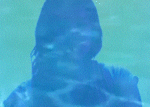Call: .dpi 28 / Call for Projects: Gender(ed) Cultures on the Internet (Deadline: 13 September 2013)
type=resources
Call for Submissions
.dpi issue 28 (fall 2013)
Deadline: 13 September 2013
Themed Section: Gender(ed) Cultures on the Internet
Guest Editor: Jennifer Chan
In the Themed Section of its 28th issue, .dpi is looking at the internet as a heterogenous space that allows for the deliberation and challenging of gender ideals.
On the internet, like-minded users find communities of interest based on mobilizing conversations around feminism and masculinism alike. Donna Haraway and Coco Fusco suggest that the early internet may have precipitated emancipatory potentials for the performance of gender, as receding boundaries between bodies and machines would allow for historically invisibilized and marginal gender subjectivities to be heard. Conversely, the imbalanced history of representational structures upheld by museum and academic art institutions run up against these optimistic intentions on the internet. In light of a vast majority of Wikipedia editors identifying as male and recurring uproars over representation disparity in video games and net art, the gaps in representation of women and queer people in technology and new media art remain unexplained and unresolved. On one hand, the complex, intertwined relationship between social discourse and representations of gender
online could be examined, since rigid ideals of masculinity and femininity are still dominant in online communities like OKCupid et AskMen and MPUA (pickup artists) forums. On the other, artistic practice that co-opts and/or questions these definitions may open doors for new ways of understanding the social construction of gender.
While Cyberfeminist collectives of the 90s sought to specifically infiltrate the male-dominated arena of net.art, feminist networked practices are pluralist today. Early artistic users such as Netochka Nezvanova and the late LaTurbo Avedon exploit the apparent anonymity of networks to project unstable personas and interests. Nowadays, online feminist critique reflects gendered realities and aspirations of users, ranging from subversive pop cultural remix to latent commentary in image aggregation on tumblrs. Elsewhere on the internet, honest writing by bloggers and writers such as Karley Sciortino (Slutever) et Marie Calloway have invoked blogosphere uproar over the “correct” artistic self-representation of female sexuality. Ultimately, binary notions of gender (masculinity and femininity) as an acculturated performance of imitating socialized ideals manifests in technology, and is also a product of technology. Yet these conventions are rendered
unstable by user deliberation of such representations within the informal space of the web (1). What kinds of practices and representations are currently important to women and queer people? What conversations reflect the realities of gender distribution in art on the internet? What would a truly postgender online environment look like? What kinds of uses of the network breach existing ideas of bodily performativity?
Submission of completed articles may include (and are not limited to):
- analyses of queer, transgender, and/or heterosexual culture online;
- networked art practices and conversations on feminism and queerness;
- descriptions of non-academic, artistic and social feminist conversations and practices facilitated by the internet;
- the gendered structure of the internet;
- feminist analyses on internet subculture;
- interviews with creatives who work within related themes;
- statements and manifestos;
- alternative histories of online feminist art practice.
Completed texts and/or projects by interested participants of all sexualities and orientations are welcomed.
(1) Jack Judith Halberstam. "Automating Gender : Postmodern Feminism in the Age of the Intelligent Machine", Feminist Studies, Vol. 17, No. 3. (Automne 1991), 440.
/////
To Submit
.dpi is looking for submissions relevant to (or stemming from) “the Web”, including text, image, sound, video, animation, interactive works, or others, and any combination of these, produced collaboratively or individually. Types of submissions include (but are not limited to) short essays, criticism, interviews, case studies, reviews, reports, creative works (or extracts), and other imaginative responses. The editorial committee encourages the submission of non-academic contributions (or that go beyond the academic style). Text length can vary between 500 and 1500 words (maximum), depending on the form and the media used.
Please send your submission (along with relevant images, videos, hyperlinks, etc.), a short biography (100 words) per person involved, an abstract (100 words), as well as 2 to 5 keywords, by Friday, 13 September 2013 to: revuedpi(at)gmail.com
An honorarium is offered depending on the length and complexity of the contribution. The authors and artists are responsible for all copyright related to the submitted content.
Submissions that fall outside of the Themed Section are also welcomed and will be considered for publication in the Field Studies Section (“hors dossier”).
/////
Based in Montreal and published online, .dpi opens a unique and bilingual space for dialogue and interdisciplinary critical reflection, research, experimentation, documentation, and positions and propositions, situated at the intersection of art, technology and feminisms. The journal is a platform where the bold, critical, engaged and curious contributor may question issues related to feminism (in all its varieties), art and digital culture.

